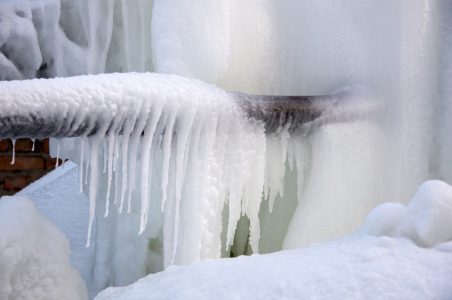Protect Against Frozen Plumbing in Cold Weather: Expert Strategies
Get StartedJust about every person seems to have their own theory in relation to How To Avoid Freezing Pipes.

Winter can wreak havoc on your pipes, especially by freezing pipelines. Right here's how to stop it from occurring and what to do if it does.
Intro
As temperatures decline, the threat of icy pipes rises, possibly resulting in pricey repair work and water damage. Recognizing just how to avoid icy pipes is essential for homeowners in cool environments.
Recognizing Icy Pipes
What causes pipelines to freeze?
Pipelines freeze when exposed to temperatures listed below 32 ° F (0 ° C) for extended durations. As water inside the pipes freezes, it expands, taxing the pipeline walls and possibly causing them to burst.
Dangers and problems
Icy pipes can result in water system disturbances, property damage, and costly fixings. Burst pipes can flooding homes and cause substantial structural damages.
Signs of Frozen Pipes
Recognizing frozen pipelines early can prevent them from breaking.
Exactly how to recognize icy pipes
Seek reduced water circulation from taps, unusual smells or noises from pipelines, and noticeable frost on revealed pipes.
Avoidance Tips
Insulating prone pipelines
Wrap pipes in insulation sleeves or use warmth tape to safeguard them from freezing temperature levels. Focus on pipelines in unheated or exterior locations of the home.
Heating strategies
Keep interior spaces effectively heated up, specifically locations with pipes. Open up cupboard doors to enable cozy air to distribute around pipelines under sinks.
Safeguarding Exterior Plumbing
Garden hoses and exterior faucets
Detach and drain garden hose pipes before winter months. Install frost-proof faucets or cover exterior taps with insulated caps.
What to Do If Your Pipes Freeze
Immediate activities to take
If you suspect icy pipes, maintain taps open up to alleviate stress as the ice melts. Utilize a hairdryer or towels soaked in hot water to thaw pipelines slowly.
Long-Term Solutions
Architectural changes
Take into consideration rerouting pipelines away from outside walls or unheated areas. Add added insulation to attics, basements, and crawl spaces.
Upgrading insulation
Purchase high-quality insulation for pipes, attic rooms, and wall surfaces. Correct insulation assists keep consistent temperatures and reduces the risk of icy pipelines.
Verdict
Stopping icy pipes requires proactive measures and quick reactions. By recognizing the causes, indications, and safety nets, property owners can shield their pipes throughout cold weather.
5 Ways to Prevent Frozen Pipes
Drain Outdoor Faucets and Disconnect Hoses
First, close the shut-off valve that controls the flow of water in the pipe to your outdoor faucet. Then, head outside to disconnect and drain your hose and open the outdoor faucet to allow the water to completely drain out of the line. Turn off the faucet when done. Finally, head back to the shut-off valve and drain the remaining water inside the pipe into a bucket or container. Additionally, if you have a home irrigation system, you should consider hiring an expert to clear the system of water each year.
Insulate Pipes
One of the best and most cost-effective methods for preventing frozen water pipes is to wrap your pipes with insulation. This is especially important for areas in your home that aren’t exposed to heat, such as an attic. We suggest using foam sleeves, which can typically be found at your local hardware store.
Keep Heat Running at 65
Your pipes are located inside your walls, and the temperature there is much colder than the rest of the house. To prevent your pipes from freezing, The Insurance Information Institute suggests that you keep your home heated to at least 65 degrees, even when traveling. You may want to invest in smart devices that can keep an eye on the temperature in your home while you’re away.
Leave Water Dripping
Moving water — even a small trickle — can prevent ice from forming inside your pipes. When freezing temps are imminent, start a drip of water from all faucets that serve exposed pipes. Leaving a few faucets running will also help relieve pressure inside the pipes and help prevent a rupture if the water inside freezes.
Open Cupboard Doors
Warm your kitchen and bathroom pipes by opening cupboards and vanities. You should also leave your interior doors ajar to help warm air circulate evenly throughout your home.

Hopefully you enjoyed our piece on Winter Plumbing Precautions: Preventing Frozen Pipes. Thanks so much for finding the time to read through our blog post. Enjoyed our write up? Please share it. Help other people find it. Thanks a lot for taking the time to read it.
Book Your Service